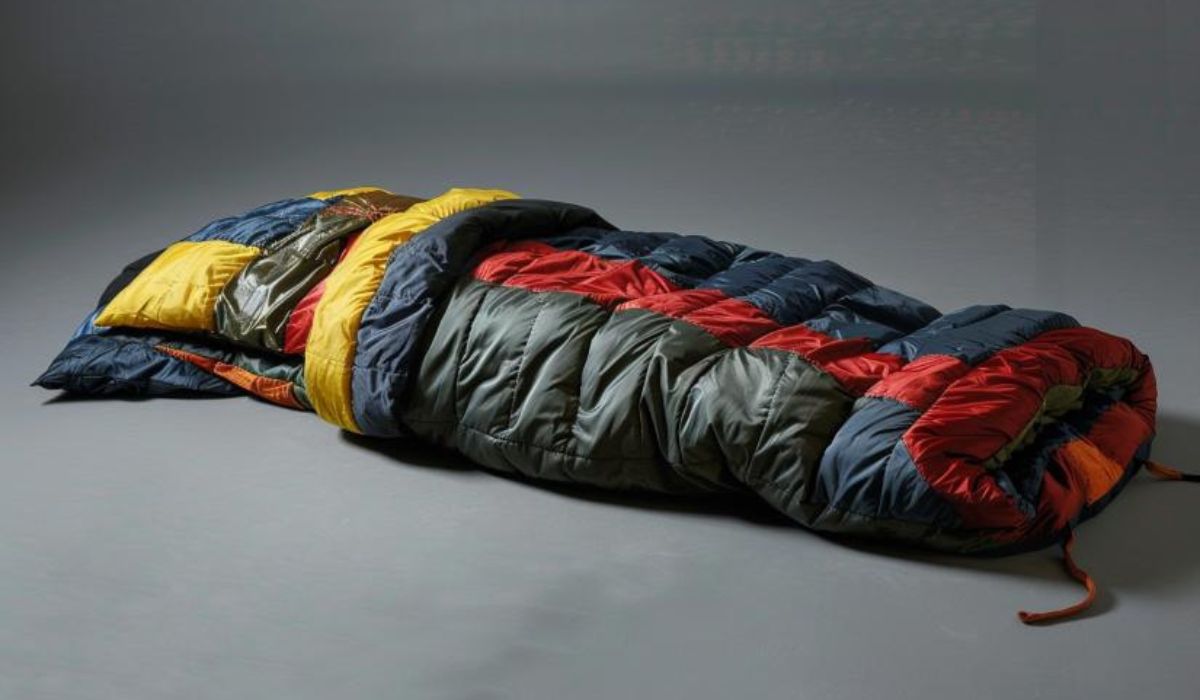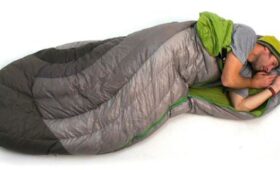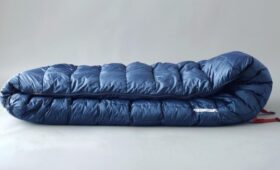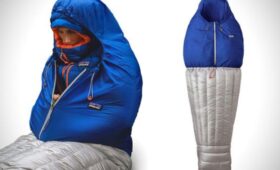
Are you tired of shivering through chilly nights in your sleeping bag? Do you wish there was an effective way to stay warm and comfortable while sleeping outdoors? Look no further! In this article, we will reveal the secrets to making your sleeping bag warmer and ensuring a cozy night’s sleep.
Whether you’re an avid camper or an occasional adventurer, a warm and insulated sleeping bag is essential for a restful night in the great outdoors. But did you know that there are simple strategies you can follow to improve the warmth of your sleeping bag?
In this article, we will dive into three main strategies for maximizing the warmth of your sleeping bag. From defending against major sources of heat loss to avoiding sneaky types of heat loss and adding heat from other sources, we have you covered with practical tips and techniques. Get ready to enhance your outdoor sleeping experience!
Key Takeaways:
- Using a sleeping bag liner can boost the warmth of your bag by 5 to 15 degrees and keep it cleaner.
- An insulating pad between you and the ground prevents heat loss through conduction.
- Wearing dry clothes, covering your head, and emptying your bladder before sleep help avoid sneaky types of heat loss.
- Eating high-carb snacks, doing light exercise, and sharing body heat supplement the heat in your sleeping bag.
- Choosing the right sleeping bag with proper fitting, warmth rating, and features like a hood or yoke matters.
Strategies to Defend Against Heat Loss
When it comes to staying warm in your sleeping bag, defending against heat loss is crucial. There are several strategies you can employ to maximize insulation and prevent heat from escaping.
One major source of heat loss is radiation. This occurs when your body heat escapes from the sleeping bag. To combat this, consider adding a sleeping bag liner. Not only does it provide an extra layer of insulation, but it can also increase the warmth of your bag by 5 to 15 degrees. Plus, it helps keep your bag cleaner and more hygienic during extended trips.
Another source of heat loss is conduction. This happens when your body loses heat to the cold ground. To combat conduction, it’s essential to use an insulating pad. Placing the pad between you and the ground acts as a barrier, preventing heat from escaping. Look for an insulating pad with a high R-value, as it provides better insulation against the cold.
Convection, or heat loss from cold air around your body, must also be addressed. Sleeping in an enclosed area, such as a tent, can help minimize convection. The tent acts as a shield against drafts and allows you to create a warmer microclimate. Additionally, selecting a well-chosen campsite with natural windbreaks, like trees or natural rock formations, can further reduce heat loss from convection.
By implementing these defensive strategies, you can significantly improve the warmth and comfort of your sleeping bag. The sleeping bag liner, insulating pad, well-chosen campsite, and tent work together to minimize heat loss and create a cozy environment for a restful night’s sleep.
Tips to Avoid Sneaky Heat Loss
Sneaky sources of heat loss can significantly affect your comfort while sleeping in a sleeping bag. To maximize warmth, here are a few tips to keep in mind:
Wear Dry Clothes
Moisture evaporation from wet clothes can drain heat from your body, making you feel cold even in a warm sleeping bag. It is crucial to wear dry clothes before getting into your sleeping bag to prevent this heat loss. By doing so, you can ensure that your body heat stays trapped within the bag, keeping you cozy throughout the night.
Cover Your Head
The head is one of the body’s primary sources of heat loss due to its significant surface area. To minimize heat loss, cover your head with a beanie or use a mummy hood on your sleeping bag. This simple step can help prevent heat loss from any exposed body part, ensuring that you stay warm and comfortable while you sleep.
Empty Your Bladder
Believe it or not, emptying your bladder before sleep can help minimize heat loss. When your body uses energy to warm up urine, it diverts precious heat away from keeping you warm in your sleeping bag. By ensuring your bladder is empty, you can reduce this heat loss and maximize the warmth retained within your body.
By following these tips to avoid sneaky heat loss, you can optimize the warmth of your sleeping bag and enjoy a cozy night’s sleep in the great outdoors.
Adding Heat from Other Sources
When it comes to staying warm in your sleeping bag, you can go beyond relying solely on your body heat. Adding heat from other sources can significantly boost your comfort level during chilly nights outdoors.
Eating high-carb snacks before bed can provide a valuable energy source that keeps you warm throughout the night. Consider indulging in energy bars with whole grains, as they offer a steady release of energy over time. These snacks not only fuel your body but also contribute to the production of body heat.
If you’re feeling a bit cold, try incorporating some light exercises into your camping routine. A few sit-ups or stretching exercises can get your blood flowing and help generate more internal heat. Just be mindful of your surroundings and find a comfortable spot to perform these exercises.
Another effective way to add warmth to your sleeping bag is by sharing body heat with a sleeping partner. Cuddling up and sharing body heat can make a significant difference in maintaining a cozy and warm environment inside your sleeping bag. This can be particularly beneficial during extremely cold nights, providing an extra layer of warmth and a sense of comfort.
By utilizing these strategies, such as consuming high-carb snacks, engaging in light exercise, and sharing body heat, you can enhance the warmth of your sleeping bag and ensure a more comfortable sleep experience in the great outdoors.
Choosing the Right Sleeping Bag
When it comes to staying warm during your outdoor adventures, choosing the right sleeping bag is essential. The right sleeping bag can significantly impact your comfort levels and help you get a good night’s sleep. Here are some factors to consider when selecting a sleeping bag:
Sleeping Bag Fitting
Ensure that the sleeping bag fits you properly. A bag with too much excess space can create dead air, which your body then needs to warm. Look for a bag that fits snugly, providing enough room for movement without excessive space.
Warmth Rating
Pay attention to the warmth rating of the sleeping bag you’re considering. Keep in mind that the warmth rating assumes you will be wearing appropriate clothing. Choose a bag with a warmth rating suitable for the temperature conditions you expect to encounter.
Sleeping Bag Shapes
Consider the different sleeping bag shapes available, such as rectangular, barrel, and mummy. Each shape has varying amounts of dead air and warmth. Rectangular bags offer more space for movement but may not provide the same level of warmth as mummy bags, which have a more contoured shape. Choose a shape that suits your preferences and the expected temperature conditions.
Hoods and Yokes
A sleeping bag with a hood can help retain heat around your head, which is an area prone to heat loss. Look for a bag with a well-insulated hood to keep you warmer during chilly nights. Additionally, consider a bag with a yoke or draft collar that helps to keep out drafts, further enhancing insulation.
By considering factors such as fitting, warmth rating, sleeping bag shapes, hoods, and yokes, you can choose a sleeping bag that maximizes warmth and comfort during your outdoor adventures.
Using an Insulating Sleep Pad
An insulating sleep pad is a crucial component for staying warm and comfortable in your sleeping bag during outdoor adventures. Not only does it provide cushioning and support, but it also acts as a barrier between your body and the cold ground, preventing heat loss through conduction. This helps to ensure a restful and cozy night’s sleep.
When choosing an insulating sleep pad, it’s essential to consider several factors for optimal performance. One important consideration is the sleeping pad’s R-value, which measures its insulation effectiveness. Look for a sleep pad with a high R-value, as a higher value indicates better insulation. This will help to minimize heat transfer from your body to the ground, keeping you warm throughout the night.
Additionally, it’s crucial to consider the weight, packing size, and ease of inflation of the sleep pad. Opt for a lightweight option that won’t add unnecessary bulk to your backpack, making it easier to carry during your outdoor adventures. A compact packing size is also advantageous for space-saving purposes. Look for a sleep pad that is easy to inflate and deflate, ensuring a hassle-free setup and takedown process.
Using an insulating sleep pad is like having a personal thermal shield against the cold ground. It not only provides insulation but also enhances your overall comfort, enabling you to truly enjoy your outdoor sleep experience.”
While it may be tempting to use alternatives such as yoga mats, it’s important to note that they offer minimal insulation and cushioning. Investing in a high-quality insulating sleep pad specifically designed for outdoor use is the best option to ensure optimal warmth and comfort.
To visualize the importance of an insulating sleep pad, take a look at this image:
By incorporating an insulating sleep pad into your camping gear, you can significantly improve your sleep quality and stay warm throughout the night. This, in turn, enhances your overall outdoor experience, allowing you to wake up refreshed and ready to take on new adventures.
Using Kid-Specific Sleeping Bags or Modifying Adult-Sized Bags
When it comes to ensuring a comfortable and warm sleep for children during outdoor adventures, using kid-specific sleeping bags or making modifications to adult-sized bags is crucial. Adult-sized sleeping bags often have extra space, creating dead air pockets that reduce the bag’s ability to retain heat. To address this issue, there are a few strategies you can follow.
One option is to fill up the extra space in adult-sized bags with clothing, such as jackets or blankets. This helps minimize the dead air and improve insulation, keeping the child cozy throughout the night. Another option is to use a kid-sized sleeping bag liner. Liners not only enhance insulation but also provide a washable barrier between the child and the sleeping bag, ensuring cleanliness and added warmth.
“Choosing the right sleeping bag or modifying an existing one can greatly impact your child’s comfort during their outdoor sleep. Using kid-specific sleeping bags or making adjustments to adult-sized bags by filling up extra space or using liners can help retain heat and provide a cozy experience.”
By using kid-specific sleeping bags or modifying adult-sized bags, you can optimize the sleeping environment for your child. These strategies effectively address the issue of dead air in sleeping bags, boosting insulation and ensuring a warm and restful night’s sleep.
Conclusion
By following these strategies and tips, you can effectively increase the warmth of your sleeping bag and stay cozy during your outdoor adventures. Defending against heat loss is crucial, and using a sleeping bag liner and insulating pad can significantly improve insulation and increase sleeping bag warmth. Choosing a well-chosen campsite and tent with natural windbreaks can also help minimize heat loss from convection.
Avoiding sneaky types of heat loss is equally important. Wearing dry clothes, covering your head with a beanie or using a mummy hood, and emptying your bladder before sleep can all help prevent unnecessary heat loss. These simple steps can make a big difference in the overall warmth and comfort of your sleeping bag.
In addition to defense, adding heat from other sources can provide extra warmth. Eating high-carb snacks before bed, engaging in light exercise, and sharing body heat with a sleeping partner are effective ways to supplement the heat in your sleeping bag. These tactics can help your body generate more heat and maintain a cozy sleeping environment.
Finally, choosing the right sleeping bag is paramount. Consider the fit, warmth rating, and shape of the bag. Look for a bag with a hood and a yoke or draft collar to retain heat and keep drafts out. Remember to also invest in a high-quality insulating sleep pad to minimize heat loss through conduction.
In conclusion, by implementing these strategies and tips, you can enhance the warmth of your sleeping bag and ensure a comfortable and cozy sleep experience during your outdoor outings. Stay warm, stay comfortable, and enjoy a restful night’s sleep in your sleeping bag!


